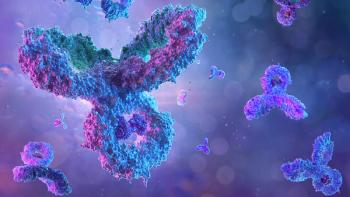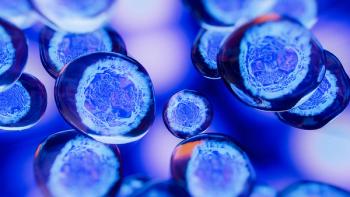
Waters Marks Ten Years of ACQUITY UPLC With the Introduction of New Products
Waters celebrates ten&$45;year anniversary of the ACQUITY UPLC System.
Waters introduced the ionKey/MS System at the Pittcon Conference and Exposition in March 2014. The system is a new approach for getting sensitivity, robustness, and ease-of-use out of mass spectrometry. Intended for use with Waters ACQUITY UPLC M-Class System and Xevo TQ-S Mass Spectrometer, the Waters ionKey/MS System physically integrates a UPLC separation into the mass spectrometer, thus producing an improvement in sensitivity. This scale of chromatography reduces solvent use and sample size.
The ionKey/MS System’s compact iKey Microfluidic Separation Device contains all components packed inside a 150-micron inner-diameter channel. The iKey device is designed to easily insert into the source of the mass spectrometer to make the fluidic and electrical connections. The eCord Intelligent Chip Technology stores the iKey device’s dimensions, chemistry type, serial number, manufacturing and QC history, and captures and records information such as operator name, instrument name, sample set name, date of first and last injection, total number of injections, observed back pressures, and operating temperatures.
Waters also introduced the ACQUITY QDa Detector, a small mass-detector that brings mass spectral information to chromatographic separations. Mass spectral information enhances chemical compound identification, which is helpful in laboratories doing method development, sample profiling, chemical synthesis, and purification. The ACQUITY QDa Detector gives analytical chemists the ability to get mass spectral information for all their samples.
The ACQUITY QDa Detector complements optical detection, such as the PDA detector, by confirming the identity of compounds with mass spectral information. Additionally, the ACQUITY QDa Detector extends the limits of sample detection for a chromatographic separation by quantifying compounds having no UV response or that are present at levels not detectable and quantifiable by optical detection.
In addition, Waters also added a new column oven to its ACQUITY UPC2 System for faster method development and column screening capabilities. The column oven has a capacity of eight columns ranging in length from 50 mm to 250 mm, with internal diameters ranging from 2.1 mm to 8.0 mm. The ability to screen column chemistries, modifier strength, back-pressure settings, and flow rate leads to faster method development and allows for time-efficient scale-up to preparative chromatography.
The temperature controlled column compartment is heated by reticulating air/forced convection having a maximum settable temperature of 90 °C. The column oven supports a maximum of eight sets of passive pre-heaters, guard columns and analytical columns. And the oven provides for eight eCord positions ensuring that valuable injection data, column type, data, are captured.
Source:
Newsletter
Stay at the forefront of biopharmaceutical innovation—subscribe to BioPharm International for expert insights on drug development, manufacturing, compliance, and more.





